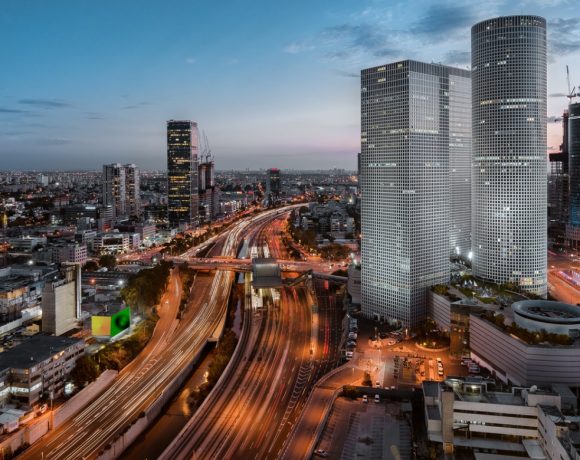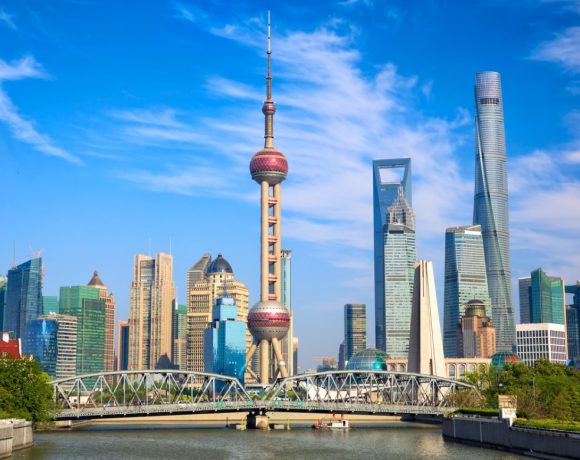- The world’s particle physics communities have been working together to build a large scientific facility in Japan. The facility, called the International Linear Collider (ILC), will produce a large number of elementary particles. The research will lead to fundamental understanding of how the Universe began and is evolving into the future.
- It has taken many years for scientists around the world to achieve a consensus on this global project and develop the necessary forefront technologies, which also have applications to transform various aspects of human society.
- Steps toward the realisation of this project are in sight, as governments, including Japan and the U.S., have expressed their interest in discussing how the project should be realised through global collaboration. The ILC can become a truly global center of scientific collaboration that realises “Science for Peace” beyond countries, races, and religions.
What will a big global project look like after coronavirus? A particle physics accelerator project that is being actively discussed among scientists, government officials, politicians, corporate leaders, and local communities, might be one of the answers to that question during the next decade.
Accelerator to Study How Our Universe Was Formed by ‘Phase Transition’
The Universe was born with the Big Bang. Initially, the Universe was filled with particles without mass, so they roamed freely like light. As the Universe began to expand and cool down, there was a sudden transition within the entire Universe, similar to water freezing to become ice. This caused the particles in the Universe to suddenly have mass. This led to the formation of atoms, matter, stars, galaxies, and our very existence today. The transition of the Universe is caused by the dynamics of “Higgs particles.” Today, we are living in the sea of Higgs particles. To really understand how the Universe was formed and will be evolving in the future, detailed studies of the Higgs particle is fundamentally important.
The Higgs particle was discovered in 2012 at the Large Hadron Collider (LHC), the largest particle accelerator with a 27-kilometer circumference, located in the suburbs of Geneva, Switzerland.
So comes the idea of building a Higgs Factory, a particle accelerator that can produce a large number of Higgs bosons for detailed studies. The International Linear Collider (ILC) is the most advanced Higgs Factory candidate that the world’s particle physics community hopes to start constructing in 6 years and start operating in mid 2030’s.
ILC and its Key Technologies
The ILC is a linear accelerator that smashes electrons with positrons, electron’s anti-particles, with a collision energy of 250 giga-electron volts (GeV), the energy just suitable to produce a maximum number of Higgs particles. It is planned to be built in the Tohoku region of Japan. The ILC will also look for new particles such as dark matter particles. It can be later extended to 50 kilometers to achieve much higher collision energy for future studies.
A ‘linear collider’ is a new invention that essentially has no upper limit on the collision energy, in contrast to a circular collider whose energy is limited by its circumference. Initially R&D on linear colliders has been carried out in individual countries, mainly the U.S, Germany and Japan, since around 1990. But in 2004 all these endeavours were united into a global collaboration as the ILC project.
Realisation of the ILC requires two key technological innovations: superconducting radio-frequency technology for efficient acceleration, and nano-beam technology for accurate collisions. The success in technological developments has led to many practical applications that include free electron laser facilities such as Euro-XFEL and LCLS-II, and high intensity neutron sources like SNS. Further applications for compact light sources for businesses, medical isotope production, LSI fabrication, accelerator-driven nuclear transmutation, and others have been discussed and studied worldwide.
Global Consensus for Future of Particle Physics
Just after the discovery of the Higgs in 2012, Japanese particle physics community [1] proposed to host the ILC in Japan. In 2013 a technical design report of the ILC was completed by the global collaboration. Europe, through the update of European Strategy for Particle Physics 2013 and 2020 [2], and the U.S., by the 2014 Report of the DOE’s Particle Physics Project Prioritisation Panel (P5) [3], both supported the ILC as a global project to be built in Japan.
However, the realisation of a multi-billion dollar project requires further scrutiny by broader communities and governments. In Japan, discussion on the ILC continued in committees of the Science Council of Japan and of the Ministry of Education, Culture, Sports, Science and Technology (MEXT). In March 2019 and February 2020, MEXT expressed interest of the government in the ILC and their intention to continue discussions with international partners. The International Committee for Future Accelerators (ICFA) [4] decided to establish the ILC International Development Team (IDT) [5] to facilitate transition into the preparatory phase of the project in 1-2 year time scale. With the establishment of the IDT, future steps toward realisation of the ILC have been now clearly defined.
Process toward Realisation
Japan has contributed to the world’s large international science and technology centers in the past, such as the International Space Station (ISS), International Thermonuclear Experimental Reactor (ITER), and Large Hadron Collider (LHC). However, Japan has never realised such a project sited within the country.
In Japan, the ILC parliamentary group was established and expanded to a non-partisan group in 2008. In addition, the Advanced Accelerator Association Promoting Science and Technology (AAA) [6], an industry-academia alliance, was established in 2008. At present, the AAA consists of more than 100 companies and about 40 universities and research institutions.
As for inter-governmental dialogues and discussions, the US-Japan joint discussion group on the ILC began in 2016. The discussion group between Germany and Japan started in 2019, and in February 2020, a quadrilateral meeting was held among France, Germany, UK, and Japan.
The biggest leap forward over the last year has been a rising support of the U.S. government toward the ILC project. We have heard strong, supportive statements from the U.S. Department of Energy and the State Department at international conferences. Now it is important for Japan to act in a timely manner to encourage cooperation with Europe and other partner countries.
Geological survey, environmental assessment preparations and a basic plan to meet the SDGs are already completed. The ILC candidate site is 20 minutes by bullet train from Sendai (population: 1.1 million), the largest city in the Tohoku region. The Tohoku region is home to many high-level academic institutions, the most prominent being Tohoku University in Sendai with acclaimed research on particle physics and cosmology in theory and experiments with high-energy accelerators. Tokyo and Sendai are 1.5 hours away. Airports are close by, providing easy access to overseas locations. The central campus is planned to be located close to the bullet train station and highway. Adequate social, cultural and transportation infrastructure allows residents and visitors to choose from a variety of options for urban and rural living.
The next milestone is the establishment of a preparatory laboratory for the ILC in cooperation with the world’s leading laboratories, currently scheduled for 2022. The construction of the ILC could start around 2025, following inter-governmental discussions.
References
[1] Japan Association of High Energy Physicists: http://www.jahep.org/en/
[2] European Strategy for Particle Physics: https://home.cern/resources/brochure/cern/european-strategy-particle-physics
[3] US Particle Physics Project Prioritization Panel 2014 report: https://www.usparticlephysics.org/wp-content/uploads/2018/03/FINAL_P5_Report_053014.pdf
[4] International Committee for Future Accelerators: https://icfa.fnal.gov/
[5] ILC Newsline: http://newsline.linearcollider.org/
[6] Advanced Accelerator Association Promoting Science and Technology: https://aaa-sentan.org/en/






dannyBoy
23 October
This sounds like a big step forward for science, and also very exciting to host such a large international facility in Asia!
iLoveBooks
23 October
What a interesting story. Interesting question; How Our Universe Was Formed! I hope some day human understand the true history of Universe.
T.Takeshita
23 October
The project looks so huge and includes not only the accelerator but also city. The idea is really global, if it is realized. We would like to see it, by hoping the project approval.